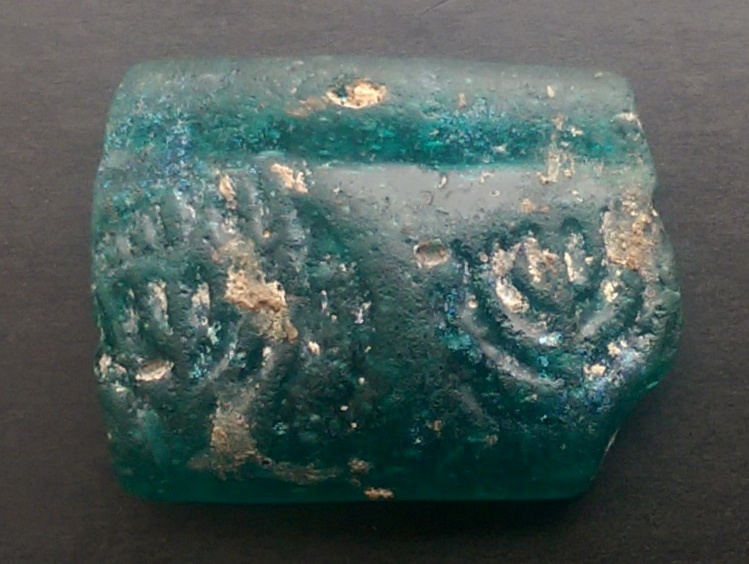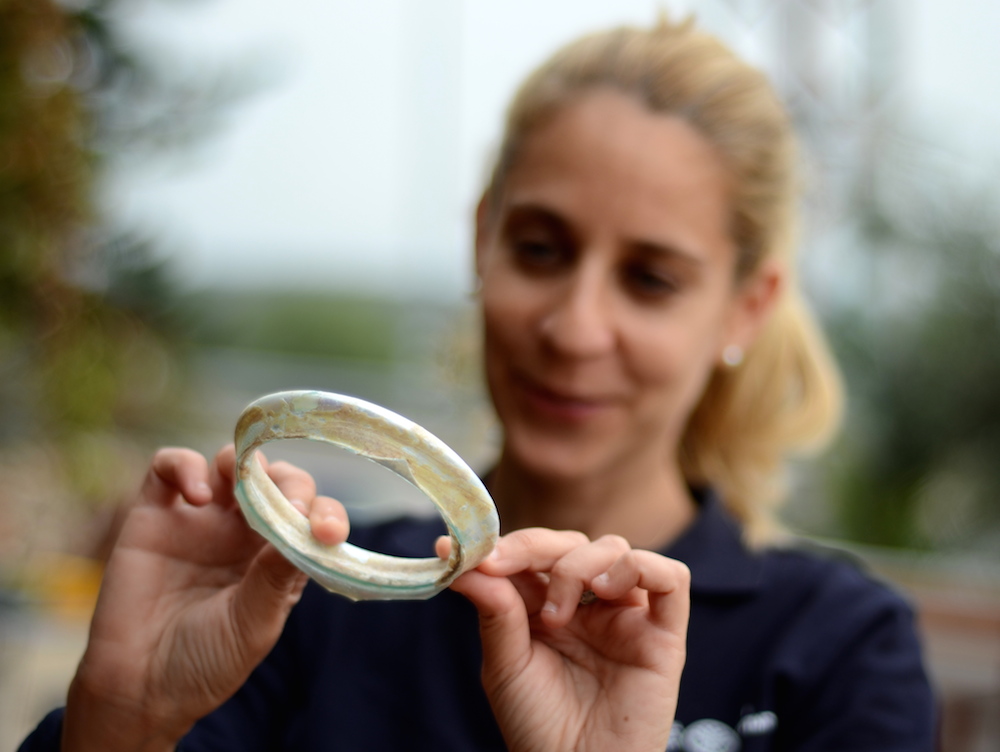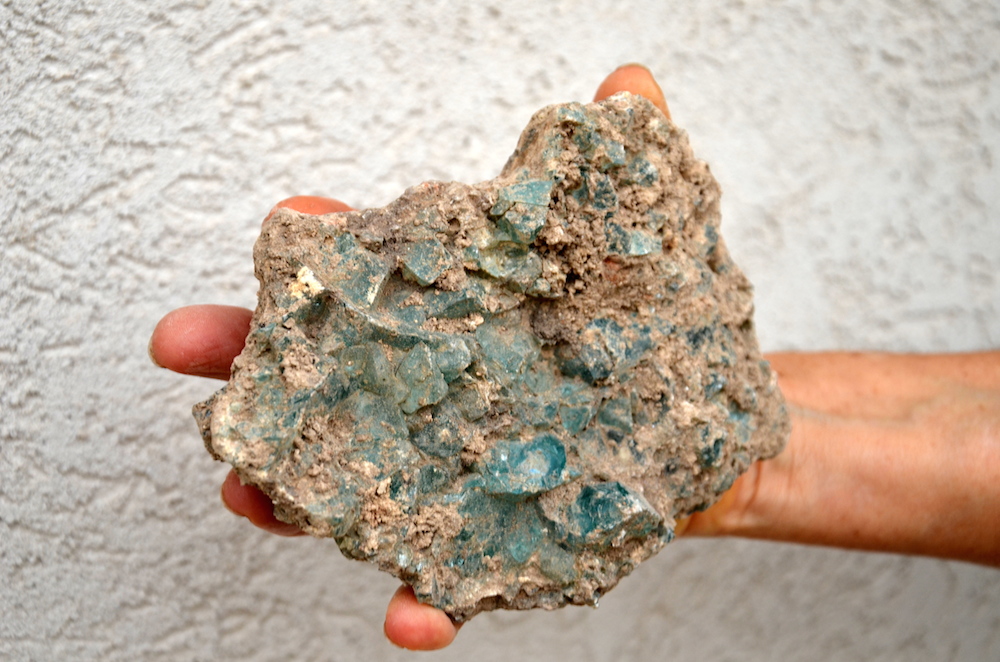Ancient Glass Bracelet Decorated with Menorahs Found in Israel

This story was updated at 11 a.m. ET on Dec. 30.
Archaeologists in Israel recently unearthed a glass bracelet decorated with a timely design. The ancient piece of jewelry is engraved with a seven-branched candelabrum, or menorah — the symbol of the Hanukkah holiday.
The bracelet was discovered in Mount Carmel National Park, which researchers think was a large settlement during the late Roman or early Byzantine period. Archaeologists have been working in the park, a declared antiquities site, before the excavation of a new water reservoir in the area.
During a routine dig last Thursday (Dec. 18), a team of excavators uncovered a box containing hundreds of glass fragments that had been thrown into a refuse pit. Among the old pieces of glass was a small fragment of decorated glass from an ancient bracelet. [The Holy Land: 7 Amazing Archaeological Finds]

"After cleaning, we were excited to discover that the bracelet, which is made of turquoise colored glass, is decorated with symbols of the seven-branched menorah – the same menorah which, according to tradition, was kept alight in the temple for eight days by means of a single cruse of oil," Limor Talmi and Dan Krizner, excavation directors for the Israel Antiquities Authority, said in a statement.
The bracelet was likely stamped with the menorah symbols when it was still hot, according to the excavation directors. The single fragment features two menorahs, each with the traditional seven branches, but with one menorah also depicting a single flame above each branch.
Glass bracelets embossed with the menorah symbol are not an unusual find in the region, according to Yael Gorin-Rosen, head of the ancient glass department of the Israel Antiquities Authority, who said that such symbols have been found on jewelry in Lebanon, Syria and Israel. Other common symbols found on glass jewelry from this period (at the end of the fourth century or beginning of the fifth century A.D.) include lions and other animals, as well as images of gods, he said.
Sign up for the Live Science daily newsletter now
Get the world’s most fascinating discoveries delivered straight to your inbox.
"Jewelry such as this was found in excavations, usually in the context of funerary offerings. It is unusual to find such objects in settlement strata, and even rarer to discover them in an ancient refuse pit," Gorin-Rosen said in a statement.

Researchers are now trying to determine what this piece of jewelry decorated with Jewish symbols was doing in the garbage pit of an ancient settlement in the upper Carmel region. While it's possible that Jews lived in the area during the late Roman and early Byzantine periods, archaeologists have also hypothesized that the large settlement in the region was once home to Christians, pagans or Samaritans.
The researchers think the bracelet may have been made in a workshop in the region to be shipped elsewhere. This hypothesis makes sense in light of the fact that other glass debris, including pieces of windowpanes and glass vessels, were found in the same refuse pit. The region where the bracelet was found may have been part of an industrial area, where goods were produced for nearby households, as well as other markets, the researchers said.
Editor's Note: This story was updated to correct the name of one of the researchers.
Follow Elizabeth Palermo @techEpalermo. Follow Live Science @livescience, Facebook & Google+. Original article on Live Science.

Elizabeth is a former Live Science associate editor and current director of audience development at the Chamber of Commerce. She graduated with a bachelor of arts degree from George Washington University. Elizabeth has traveled throughout the Americas, studying political systems and indigenous cultures and teaching English to students of all ages.









